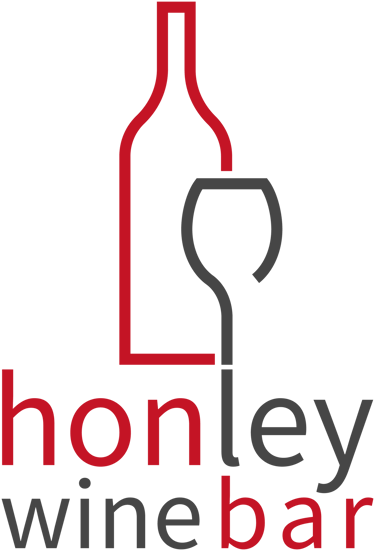Spanish Wine Explorer
Spain is a huge country, with climate varying from the decidedly cold and soggy to the hot, dry and almost barren - and both make some great wines. Rioja’s reds get most of the focus in the export market, but there are some amazing whites (including Rioja), many more reds than just Rioja, and the much-maligned sherry which is winning new fans as they rediscover it!
The program combines theory, practical tasting, and group discussion to encourage confidence and curiosity in Spanish wine. This course is designed for those who have completed our Introduction to Wine syllabus, hold a WSET Level 1 or 2 qualification or higher, or have equivalent knowledge. It blends history, classic regions, and contemporary developments in Spanish wine with plenty of Spanish wine! Each 90-minute session combines tasting, discussion, and interactive learning, with a focus on both tradition and innovation.
Session 1: Spanish Wine Foundations – History, Regions & Quality System
In session 1, we look at how the modern Spanish wine industry came to be, tracing its roots back in time. We'll look at quality systems and classifications and how to interpret them, and we'll look at the major Spanish regions and why they're famous. We'll also taste some wines! From sherries to Rioja to Rías Baixas, we'll look at what makes those wines distinct and why they're so popular today.
Brief history: From Phoenician and Roman roots to the modern era, including the impact of the Moors and the evolution of Sherry and Rioja.
Introduction to Spain’s wine region classification (DOP, DOCa, DO, VP, VC, IGP, VdM) and what these mean for quality and style.
Overview of Spain’s diverse climates and seven major wine regions.
Activity: Map exercise—locate key regions and discuss their signature styles.
Session 2: Iconic Grapes & Classic Regions – Tempranillo, Garnacha & Beyond
Spanish grape naming can be confusing, and like many old world wines it's not unusual for the wine to be named after the region it comes from rather than what's in it; we'll start demystifying that with two of the biggest grapes and look at what they're called, where they're grown, and what's made with them. We'll revisit some of the wine making choices we covered in the intro course, and the effects those have on the wines, and we'll taste some of the best.
Deep dive into Spain’s most famous red grapes: Tempranillo (Rioja, Ribera del Duero, Toro) and Garnacha (Priorat, Montsant, Navarra).
Exploration of classic regions: Rioja, Ribera del Duero, Priorat, and their unique expressions
Discussion: Traditional vs. modern winemaking techniques in these regions.
Session 3: White Wines & Sparkling – Galicia, Rueda, and Cava
Spanish white wine was a well kept secret in the UK for a long time - but word is getting out! Albariño is perhaps the best known here now, but there's a whole history of white grape-growing and white wine-making to explore. We'll look at the still and sparkling world of Spain, and we'll taste them as we go.
The rise of Spanish white wines: Albariño (Rías Baixas), Godello (Valdeorras), Verdejo (Rueda), and Xarel.lo (Penedès)
Introduction to Cava: Traditional method sparkling wine from Catalonia and beyond
Trends: Increasing quality, indigenous grapes, and the move towards organic and biodynamic viticulture
Session 4: The South & Islands – Sherry, Monastrell, and Volcanic Wines
Sherry has a terrible reputation, in the UK at least. Whether it was ever actually fair vs whether that was just reflective of shipping us all the rubbish (Fosters from Australia, anyone?) is up for debate, but it's certainly true that there's so much more to it that it's worth a second glance. We'll look at how it's made, the styles it's made in and some great examples of dry through (very) sweet. We'll then jump back to non-fortified wines and look at how the climate and the terrain and a volcanic history has helped make some great wines - and as always, we'll taste as we go, sampling some of the delights.
Sherry (Jerez): Styles, history, and the role of Palomino and Pedro Ximénez
Monastrell (Mourvèdre) from Jumilla and Alicante: Spain’s bold, sun-drenched reds
Canary and Balearic Islands: Unique terroir, indigenous grapes, and volcanic influences
Discussion: How climate and geography shape these distinctive wines.
Over the previous four sessions we've talked a lot about Spain's winemaking past and how it's shaped today; in the last session, we look to the future a bit and how regions new and old (but overlooked) are starting to get a second wind. We'll look at future trends and the growth of Spanish natural wines, agricultural practices that are more environmentally friendly - but less productive, so they lend themselves to smaller quantities of better wine, and we'll finish with a guided tasting and then a tasting challenge.
New frontiers: Bierzo (Mencía), Gredos (Garnacha), Utiel-Requena (Bobal), and the resurgence of lesser-known regions.
Modern winemaking: Minimal intervention, organic/biodynamic practices, and the focus on terroir.
Wrap-up: Spain’s future—how tradition and innovation are shaping the next generation of Spanish wines.
Session 5: Spain Now – Emerging Regions, Modern Styles & Trends
Congratulations!
Once you've completed all five sessions you'll get a certificate marking your completion - but more importantly, you'll be confident to talk Spanish wine with a waiter, sommelier, shopkeeper or with your family and friends. You'll know how to pick a likely winner from a wine list of the big name regions, or how to spot a hidden gem on a shelf or list somewhere. And you'll have had fun, guaranteed!


